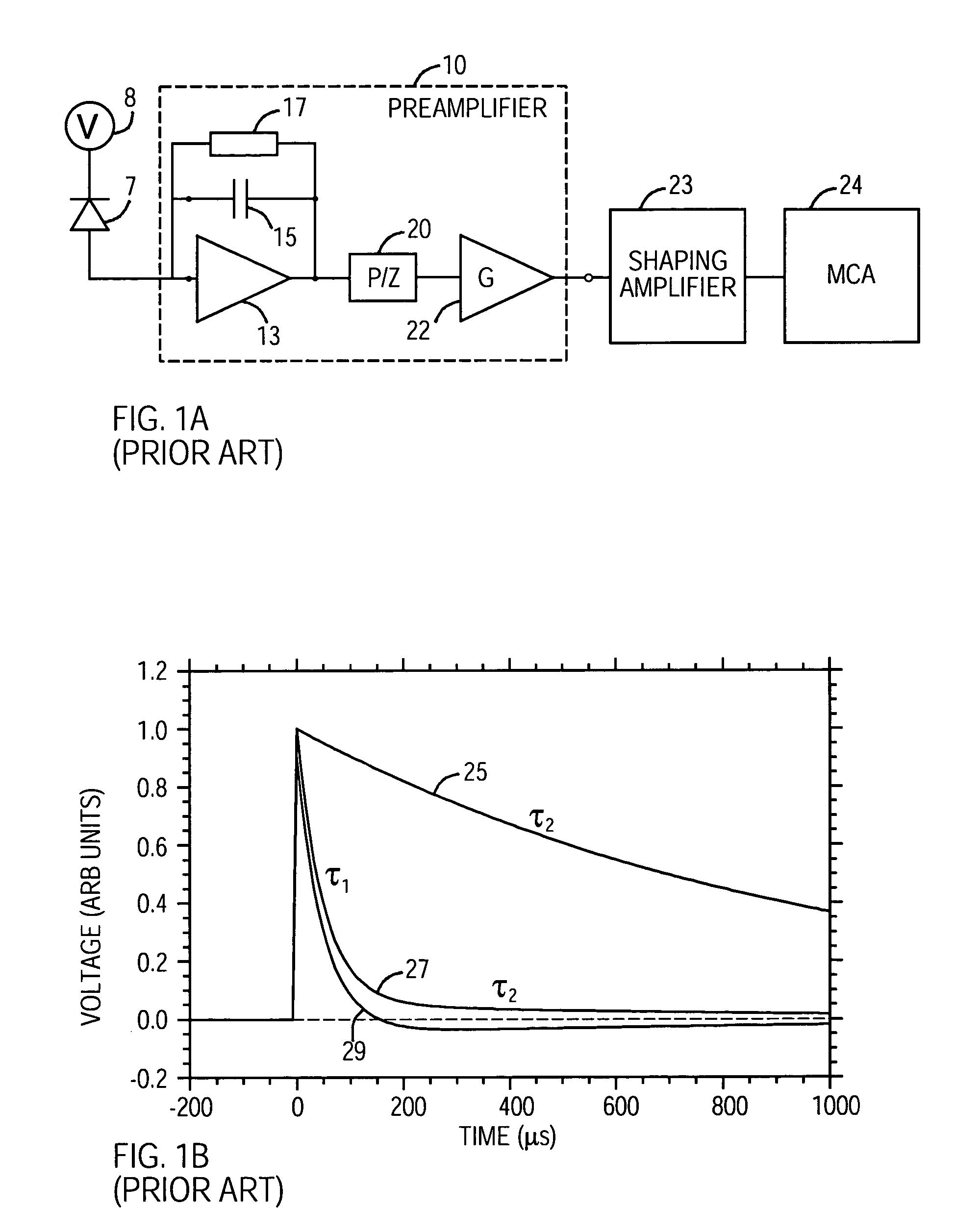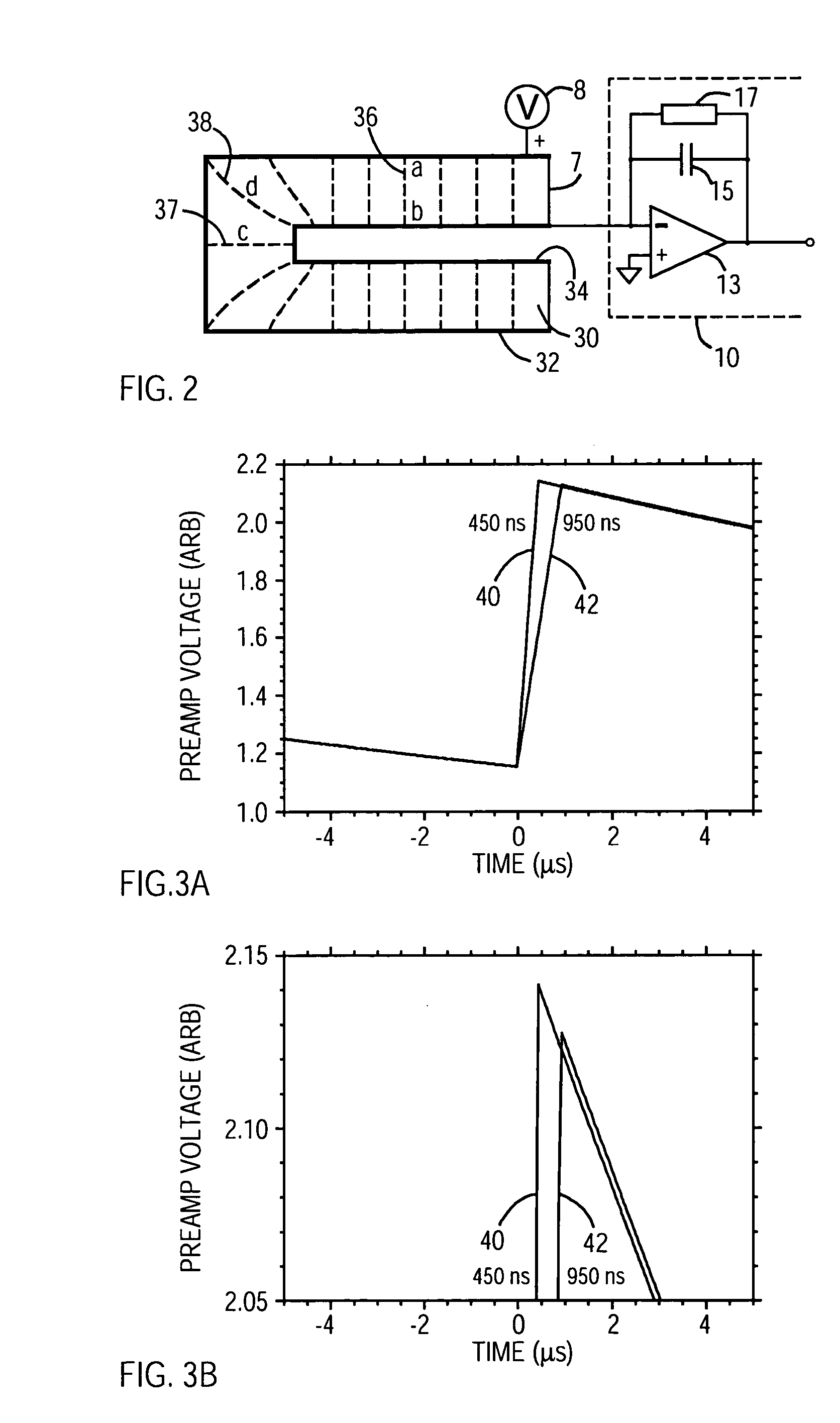Method and apparatus for improving resolution in spectrometers processing output steps from non-ideal signal sources
- Summary
- Abstract
- Description
- Claims
- Application Information
AI Technical Summary
Benefits of technology
Problems solved by technology
Method used
Image
Examples
Embodiment Construction
to CsI(T1) scintillators
[0231] In the majority of applications described above, the signals were nominally single-pole outputs with perhaps a small second-pole term as an error term in the desired output. The TCWFS-filtering method was originally developed to deal with such signals, and it does so well. However, the method is not restricted to such signals, as we noted earlier and the following example demonstrates. In this case we will look at signals from CsI(T1) scintillators coupled either to photodiodes or photomultiplier tubes. It has been known for some time that CsI(T1) is one of a class of scintillators whose light output decays with at least two different decay time components [SKULSKI-2001], a short component of about 600 ns and a long component of about 4 .mu.s. FIG. 14 shows an output pulse from CsI(T1) when stimulated by a gamma-ray. The shorter and longer components are clearly visible in the output, which is readily described as a two-pole (2-P) device. As a scintill...
PUM
 Login to View More
Login to View More Abstract
Description
Claims
Application Information
 Login to View More
Login to View More - R&D
- Intellectual Property
- Life Sciences
- Materials
- Tech Scout
- Unparalleled Data Quality
- Higher Quality Content
- 60% Fewer Hallucinations
Browse by: Latest US Patents, China's latest patents, Technical Efficacy Thesaurus, Application Domain, Technology Topic, Popular Technical Reports.
© 2025 PatSnap. All rights reserved.Legal|Privacy policy|Modern Slavery Act Transparency Statement|Sitemap|About US| Contact US: help@patsnap.com



